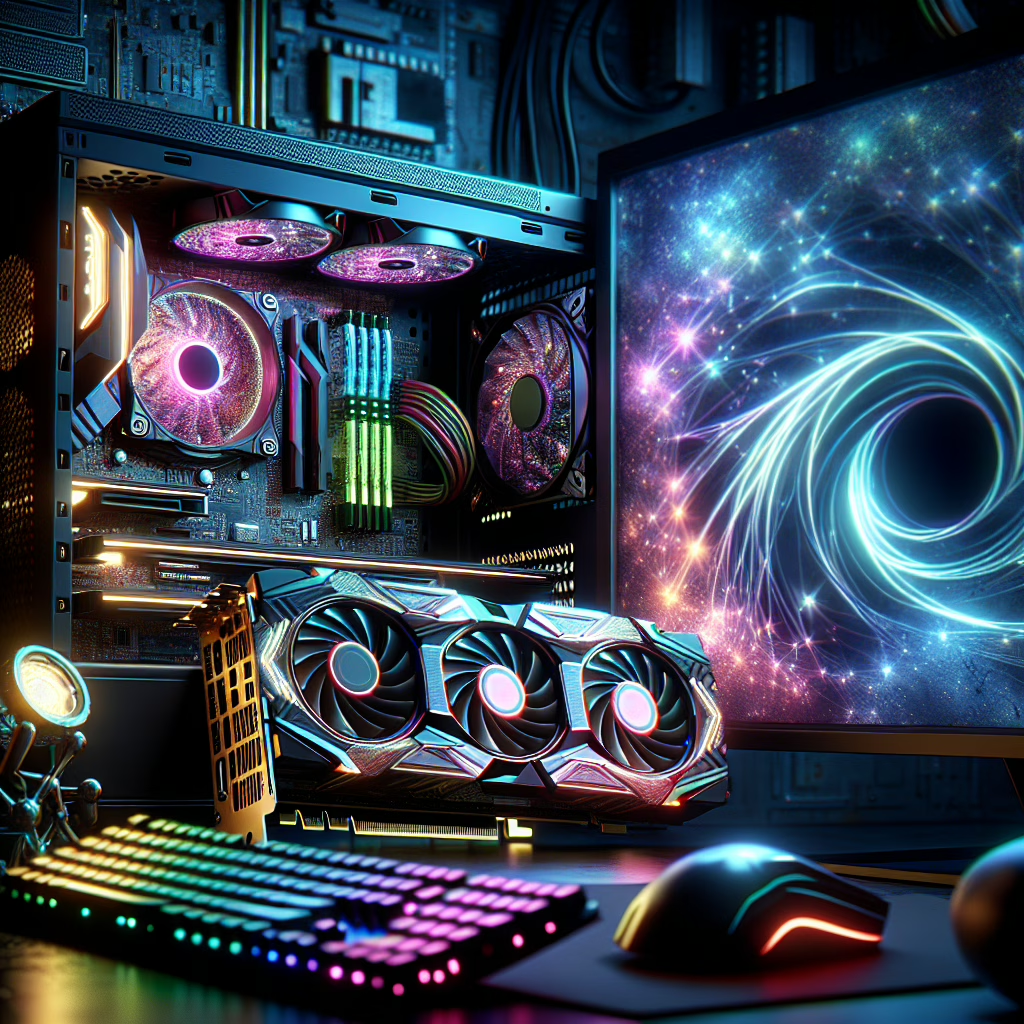In the vibrant world of computing, where graphics processing units (GPUs) reign supreme, Intel is gearing up to give NVIDIA a run for its money with its upcoming Arc B770 GPU. This new contender is expected to debut at Computex, and it seems like the tech community is buzzing with excitement. Will it be able to stand toe-to-toe with NVIDIA’s RTX 5060? Let’s dive into the delightful chaos that is the GPU market!
The Rise of the Arc B770 GPU
Intel has been on a mission to shake things up since it launched its Arc series. The Arc B770 GPU promises to offer impressive performance levels that could rival the likes of NVIDIA’s RTX 5060. For those who haven’t been following closely, Intel aims to provide gamers and creators with high-quality graphics processing that doesn’t break the bank. But how does this all stack up?
With rumors swirling faster than a gaming mouse on a frenzied click fest, many enthusiasts are eager to see if Intel can finally deliver a product that meets or exceeds expectations. The Arc B770 is poised to bring significant advancements in ray tracing, AI capabilities, and overall efficiency. Imagine gaming at stunning resolutions without your wallet weeping in despair!
What Can We Expect from Performance?
The Arc B770 GPU is rumored to feature cutting-edge specifications that may put it in direct competition with the NVIDIA RTX 5060. Early predictions suggest that we might see performance benchmarks that are not only competitive but also potentially groundbreaking. Who wouldn’t want smoother frame rates, better graphics rendering, and immersive gameplay experiences?
One of the most exciting aspects is how Intel plans to integrate their unique hardware features. The Arc series has already hinted at innovations such as hardware-accelerated ray tracing and advanced AI enhancements. For gamers and content creators alike, this could mean more realistic lighting effects and smarter algorithms handling everything from texture rendering to physics simulations.
The Battle of the Brands
NVIDIA has long held the crown in the GPU arena, particularly with its RTX series leading the charge. However, competition breeds innovation, and the arrival of the Arc B770 GPU could spark a new wave of improvements across both brands. If Intel can deliver on its promises, we might see a price drop for existing models from NVIDIA as they scramble to maintain their market dominance.
This rivalry can only be good news for consumers! More options lead to better prices and enhanced features as companies vie for our attention (and hard-earned cash). Just imagine walking into your local electronics store and being greeted by shelves brimming with powerful GPUs at prices that don’t require a second mortgage.
Technical Specs: What We Know So Far
While we wait with bated breath for more concrete details about the Arc B770 GPU, leaks have provided tantalizing hints about its specifications. Rumors suggest:
- High core counts: This means faster processing speeds and improved multitasking abilities—perfect for gamers who insist on streaming their epic victories.
- Advanced cooling solutions: Nobody wants their rig sounding like a jet engine when they’re trying to enjoy a peaceful gaming session!
- Support for next-gen technologies: From ray tracing to DLSS-like features, Intel aims to ensure that their users can enjoy top-tier graphics.
The Future Looks Bright (and Colorful)
If all goes according to plan, Intel’s Arc B770 GPU could become a game-changer in 2025. As we look ahead, it’s clear that consumers will benefit from increased competition in the GPU space. Whether you’re an avid gamer or a professional content creator, having options is always a good thing!
The potential release of this powerhouse alongside NVIDIA’s RTX 5060 could usher in a new era where performance meets affordability—and let’s face it; who wouldn’t want that? So keep your eyes peeled for Computex announcements; you won’t want to miss this showdown!
In conclusion, whether you’re Team Intel or Team NVIDIA (or just looking for a good deal), it’s an exciting time to be involved in tech. As we await further developments, we encourage you to explore related articles like Spotify artist page issues that are causing a stir or check out what Google could bring to Android phones. As always, let us know your thoughts below—are you rooting for Intel’s new challenger or betting on NVIDIA’s tried-and-true legacy?

